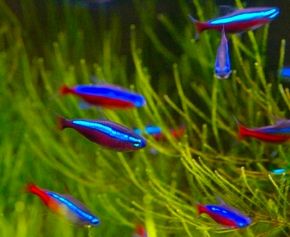Mechanical Aquarium Filtration
Mechanical aquarium filtration is accomplished by moving water through some kind of material that acts like a sieve, catching the solids and removing them from the water. Ideally, the most effective mechanical filter removes particles down to very small sizes, but there is a trade-off here.
The smaller the particles are that the filter removes, the faster the filter material will clog. Because clogged filter material severely reduces the rate of water flow through it, the material must be cleaned or changed. The more effective the filter material is at trapping small particles, the more often you will have to clean the filter.
Advertisement
For this reason, most filter material is designed to catch only the larger, more visible solids. Of course, as the filter material catches large particles, the openings in the material through which the water flows become increasingly smaller and thus trap increasingly smaller particles. The material does clog eventually, but it takes much longer.
Let's explore another type of aquarium filtration -- chemical filtration -- in the next section.
